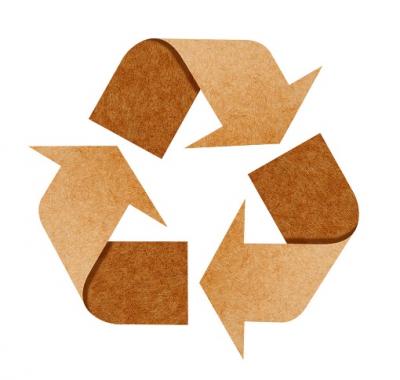The Eco-packaging Trend Reaches Luxury Brands
As environmental awareness and policies continue to multiply, consumers are becoming more concerned about reducing their impact on the environment. The area where customers are paying the most attention is green packaging, an industry that is expanding so rapidly that it is set to have a value of 440,3 billion dollars by 2025, with an annual growth percentage of about 7,7%, according to the Global Sustainable Packaging Report by Research and Markets. As a result, brands find themselves faced with more pressure to wrap products in eco-friendly packaging, while still requiring high-quality materials to reflect the luxury of their product.
The younger demographic of consumers in particular are putting pressure on their favourite luxury brands to reduce their carbon footprint. Among the millennials surveyed by Research and Markets, as many as 81% said they are happy to pay more for a product that is sustainably packaged, while 65% claimed to be ready to pay as much as 10% to 20% more. Almost half also claim that sustainability would motivate their loyalty towards a brand, thus reinforcing the importance for brands to invest in becoming transparently sustainable in order to remain their target customers’ first choice.
The new standards of transparency
Some of the world’s most iconic luxury brands have already joined the eco-packaging trend, with leading companies taking action to get their packaging certified with labels of sustainability. This comes in response to consumers seeking more transparency as they become more educated about official certifications that ensure materials are recyclable.
The most common internationally-recognised stamp that customers are looking out for is the FSC (Forest Stewardship Council) Certification, which confirms that the product has been made with certified forest materials from institutionally approved sources. There are three different types of FSC labels in total:
1. FSC 100%: When the package is made using paper derived from a well-managed forest
2. FSC RECYCLED: Attests that the paper used comes from reclaimed/re-used materials
3. FSC MIX: Indicates that paper comes from FSC-certified forests, recycled material, or controlled wood
Another internationally recognised organisation, Programme for the Endorsement of Forest Certification (PEFC), serves to support the same mission as FSC but by promoting Sustainable Forest Management (SFM) through independent third-party certification. While PEFC is not a standards agency like FSC, it is special in that it takes into consideration the processing of timber, resulting in a larger emphasis on the supply chain than FSC. It is considered the most appropriate certification system for small forests.
Apart from official sustainability stamps, many brands also enhance packaging labels with instructions on how to recycle, partly to educate, but also to reflect a positive brand image in the eyes of eco-conscious customers. The choice to adopt recyclable materials and stamps can be considered a shrewd strategy, since customers expect companies to make it easier for them to shop sustainably. Meanwhile, when it comes to paper-based packaging, there is no shortage of choices.

From paper innovations to premium design
In order to achieve a balance between high quality and low environmental impact, luxury brands are turning to boxes made of paper and cardboard as the most sophisticated alternative packaging. Paper has become the green choice par excellence because it is both sustainable and versatile enough to meet the aesthetic demands of the luxury market.
With Emmeci machines, for instance, it is possible to automatically produce paper-wrapped rigid boxes intended for luxury products that can then also be recycled after use. Considering the wide range of textures, from matte to sleek, there is also a lot of room for creativity and embellishment. When it comes to printing and decorating, every aspect of a box can be personalised with various colour and texture options.
Many companies have shown a serious commitment to finding alternative materials which are either recyclable, upcycled, or organic and free of aluminium. The range of green options to choose from are considerable: bamboo paper, cotton paper, algae paper or apple paper, to name just a few, are all becoming increasingly used as renewable resources.

It is also important to underline the effort companies are making to identify alternative inks, such as the water-based or vegetable ones, with low content of heavy metals and lack of toxic compounds.
Emmeci machines provide the ideal solution for rigid cardboard boxes that are composed almost entirely by environmentally-friendly materials such as paper and cardboard, making it efficient for the manufacturer to meet eco-compatibility requirements.
They also uses materials that are already recyclable to create unique designs that have been specifically developed for the luxury goods segment, as for example cylindrical paperboard boxes and big-sized rigid packaging. From this perspective, design is also playing a highly effective role in meeting consumers’ ecological demands.
Companies are putting new emphasis on creating elegant luxury boxes attractive enough to be retained by the customer after opening and using the product, to be kept as aesthetic containers before ultimately being recycled.
At Emmeci, we are committed to keeping up to date with the latest research and with the use of new kinds totally green paper materials. As it becomes impossible to ignore the impact of environmental awareness on consumers’ shopping habits, it is ever more of essence that luxury brands keep up with the times and adopt greener packaging.
